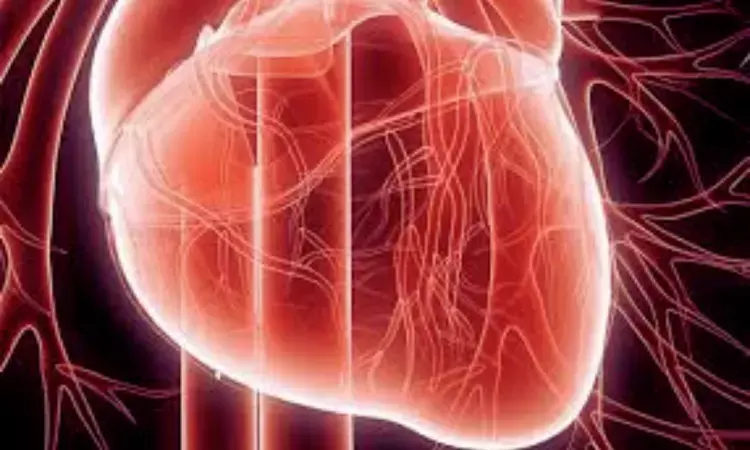- Home
- Medical news & Guidelines
- Anesthesiology
- Cardiology and CTVS
- Critical Care
- Dentistry
- Dermatology
- Diabetes and Endocrinology
- ENT
- Gastroenterology
- Medicine
- Nephrology
- Neurology
- Obstretics-Gynaecology
- Oncology
- Ophthalmology
- Orthopaedics
- Pediatrics-Neonatology
- Psychiatry
- Pulmonology
- Radiology
- Surgery
- Urology
- Laboratory Medicine
- Diet
- Nursing
- Paramedical
- Physiotherapy
- Health news
- Fact Check
- Bone Health Fact Check
- Brain Health Fact Check
- Cancer Related Fact Check
- Child Care Fact Check
- Dental and oral health fact check
- Diabetes and metabolic health fact check
- Diet and Nutrition Fact Check
- Eye and ENT Care Fact Check
- Fitness fact check
- Gut health fact check
- Heart health fact check
- Kidney health fact check
- Medical education fact check
- Men's health fact check
- Respiratory fact check
- Skin and hair care fact check
- Vaccine and Immunization fact check
- Women's health fact check
- AYUSH
- State News
- Andaman and Nicobar Islands
- Andhra Pradesh
- Arunachal Pradesh
- Assam
- Bihar
- Chandigarh
- Chattisgarh
- Dadra and Nagar Haveli
- Daman and Diu
- Delhi
- Goa
- Gujarat
- Haryana
- Himachal Pradesh
- Jammu & Kashmir
- Jharkhand
- Karnataka
- Kerala
- Ladakh
- Lakshadweep
- Madhya Pradesh
- Maharashtra
- Manipur
- Meghalaya
- Mizoram
- Nagaland
- Odisha
- Puducherry
- Punjab
- Rajasthan
- Sikkim
- Tamil Nadu
- Telangana
- Tripura
- Uttar Pradesh
- Uttrakhand
- West Bengal
- Medical Education
- Industry
Patients with higher TyG index and hyperuricemia at higher risk of MACE after CABG

China: A recent study has suggested combining the TyG index and SUA (serum uric acid) is more accurate for assessing cardiovascular risk in patients undergoing CABG (coronary artery bypass grafting). The patients with higher TyG index and hyperuricemia were revealed to be at higher risk of MACE.
The multicenter, retrospective cohort study revealed that in patients undergoing CABG, the TyG (triglyceride-glucose) index interacts synergistically with SUA to increase the MACE (major adverse cardiovascular events) risk in patients undergoing CABG. The study appeared in Cardiovascular Diabetology on 02 May 2023.
Previous studies have shown elevated serum uric acid as a risk factor for cardiovascular disease development. TyG index is a novel surrogate for insulin resistance and has been proven to be an independent predictor for adverse cardiac events. No study, however, has specifically focused on the interaction between the two metabolic risk factors. Therefore, Zhenguo Wu, Qilu Hospital of Shandong University, Jinan, Shandong, China, and colleagues aimed to determine if the SUA and TyG index combination could result in a more accurate prognostic prediction in patients undergoing CABG in a multicenter, retrospective cohort study.
The study included a total of 1225 patients who underwent CABG. The patients were grouped based on the sex-specific criteria of hyperuricemia (HUA) and the cut-off value of the TyG index. The interaction between the TyG index and serum uric acid was estimated using attributable proportion (AP), synergy index (SI), and relative excess risk due to interaction (RERI).
The model performance improvement yielded by including the TyG index and SUA was examined by net reclassification improvement (NRI), C-statistics, and integrated discrimination improvement (IDI). The goodness-of-fit of models was assessed using the χ2 likelihood ratio test, Bayesian information criterion (BIC), and Akaike information criterion (AIC).
The study revealed the following findings:
· During follow-up, 263 patients developed MACE.
· The joint and independent associations of the TyG index and serum uric acid with adverse events were significant.
Patients having higher TyG index and hyperuricemia were at higher risk of MACE.
· The authors found a significant synergistic interaction between the TyG index and SUA [RERI: 1.83; AP: 0.41; SI: 2.13].
· There was a significant improvement in prognostic prediction and model fit [change in C-statistic: 0.038; continuous NRI: 0.336; IDI: 0.031; AIC: 3534.29; BIC: 3616.45) on the addition of the TyG index and SUA.
The study revealed the predictive value of the SUA and the TyG index in patients who underwent CABG.
"Our findings provided novel information on the synergistic interaction between the serum uric acid and TyG index," the researchers wrote. "The SUA and TyG index combination could be proposed as a beneficial prognostic indicator in post-CABG patients."
Reference:
Wu, Z., Cheng, C., Sun, X. et al. The synergistic effect of the triglyceride-glucose index and serum uric acid on the prediction of major adverse cardiovascular events after coronary artery bypass grafting: a multicenter retrospective cohort study. Cardiovasc Diabetol 22, 103 (2023). https://doi.org/10.1186/s12933-023-01838-z
Dr Kamal Kant Kohli-MBBS, DTCD- a chest specialist with more than 30 years of practice and a flair for writing clinical articles, Dr Kamal Kant Kohli joined Medical Dialogues as a Chief Editor of Medical News. Besides writing articles, as an editor, he proofreads and verifies all the medical content published on Medical Dialogues including those coming from journals, studies,medical conferences,guidelines etc. Email: drkohli@medicaldialogues.in. Contact no. 011-43720751


